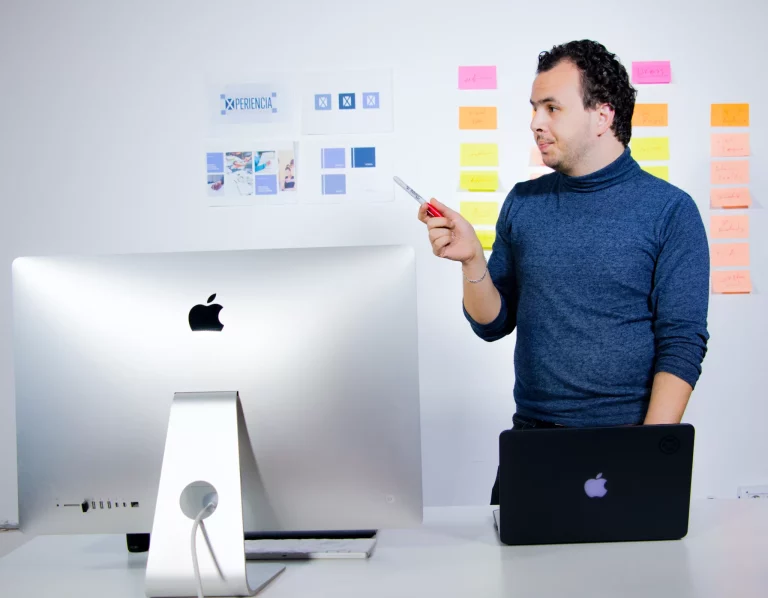Understanding body language is crucial in various social interactions, personal or professional.
One aspect of body language is dominance, which can influence power dynamics, negotiations, and interpersonal relationships.
This guide explores the body language of dominance, offering insights into its examples, best practices, features, pros and cons, and benefits. We will also discuss how to use this knowledge effectively and how to deal with dominant individuals.
Special Offer
Definition of Body Language of Dominance:
Body language of dominance refers to nonverbal cues that indicate control, authority, and confidence. These signals are often used consciously or unconsciously to establish or reinforce a position of power in social or professional interactions.
Examples of Body Language of Dominance:
- Posture: Standing or sitting upright with shoulders back.
- Eye Contact: Maintaining steady and direct eye contact.
- Gestures: Using broad, expansive gestures that take up space.
- Facial Expressions: Displaying a neutral or stern expression.
- Touch: Initiating touch, like handshakes or pats on the back, to assert control.
- Proximity: Invading personal space to establish dominance.
- Voice: Speaking in a firm, steady, and deep tone.
Best Practices:
- Context Awareness: Use dominant body language appropriately based on the situation and cultural context.
- Balance: Combine dominance with approachable and respectful behavior to avoid appearing overly aggressive.
- Observation: Respond to others’ body language to gauge their comfort and response.
- Subtlety: Subtle expressions of dominance are often more effective and less likely to provoke resistance.
Features:
- Assertiveness: Clear and confident movements.
- Space Utilization: Taking up more physical space.
- Decisiveness: Quick, deliberate actions and gestures.
- Calmness: Maintaining composure and control in various situations.
Pros and Cons:
Pros:
- Enhances leadership presence.
- Facilitates control in negotiations.
- Projects confidence and authority.
- Can command respect and attention.
Cons:
- It may be perceived as intimidating or aggressive.
- It can create tension or resistance in collaborative settings.
- It may not be culturally appropriate in all contexts.
Benefits:
- Improved Leadership: Enhances perceived leadership qualities and authority.
- Effective Communication: Ensures messages are delivered with confidence and clarity.
- Negotiation Power: Increases influence and control in negotiations.
- Respect and Compliance: Encourages respect and compliance from others.
What Makes Body Language of Dominance Effective:
- Consistency: Consistent body language that matches verbal messages.
- Confidence: Genuine confidence that supports dominant body language.
- Contextual Use: Appropriate application based on situational demands.
- Emotional Intelligence: Ability to read and respond to others’ cues.
How Understanding the Body Language of Dominance Helps Teams and Individuals:
- Team Dynamics: Enhances understanding of power dynamics and roles within a team.
- Conflict Resolution: Helps identify and address sources of tension or conflict.
- Personal Development: Aids in developing personal assertiveness and confidence.
- Interpersonal Skills: Improves ability to navigate social and professional interactions effectively.
How to Use Body Language of Dominance:
- In Leadership: Use dominant body language to establish authority and guide teams.
- In Negotiations: Assert control and influence outcomes with confident gestures and posture.
- In Presentations: Capture and maintain audience attention with expansive movements and eye contact.
- In Conflict: Defuse potential conflicts by maintaining composure and using controlled body language.
Tips for Dealing with Dominant People:
- Stay Calm: Maintain your composure and avoid appearing intimidated.
- Assert Yourself: Use confident body language to establish your own presence.
- Set Boundaries: Politely but firmly set personal and professional boundaries.
- Understand Intent: Try to understand the underlying reasons for their dominance.
- Communicate Clearly: Use clear and direct communication to convey your points.
- Seek Compromise: Look for win-win solutions to reduce power struggles.
Examples of Dominant Body Language:
- Steepling Fingers: Forming a steeple with fingers while speaking.
- Hands-on Hips: Standing with hands on hips to take up more space.
- Leaning In: Leaning forward slightly during conversations.
- Standing Tall: Maintaining an upright and tall posture.
- Chin Up: Keeping the chin raised to convey confidence.
- Controlled Movements: Making deliberate and purposeful movements.
- Occupying Space: Spreading out belongings or taking up space at a table.
- Firm Handshake: Offering a firm and steady handshake.
- Slow Blinking: Maintaining steady eye contact with slow, deliberate blinking.
- Open Palms: Using open hand gestures to appear more authoritative.
- Direct Gaze: Holding direct eye contact without looking away.
- Minimal Fidgeting: Keeping movements minimal to appear in control.
- Forward Stance: Standing with feet shoulder-width apart, facing forward.
- Mirroring: Subtly mirroring dominant individuals to establish rapport.
- Pausing: Using strategic pauses in speech to command attention.
- Sitting Forward: Leaning slightly forward while sitting to show engagement.
- Expansive Gestures: Using broad, sweeping hand gestures.
- Stroking Chin: Gently stroking the chin while contemplating.
- Slow Movements: Moving slowly and deliberately to convey calm authority.
- Confident Smile: Smiling confidently without appearing overly friendly.
- Controlled Breathing: Breathing slowly and deeply to maintain composure.
Conclusion:
Understanding and effectively using the body language of dominance can significantly impact social and professional interactions.
By mastering these nonverbal cues, individuals can enhance their leadership presence, improve communication, and navigate power dynamics more effectively.
However, using this knowledge with emotional intelligence and cultural sensitivity is essential to avoid potential pitfalls.
With 30+ years of training experience, I founded Oak Innovation (oakinnovation.com) in 1995. I help busy training professionals and business managers deliver better training courses in less time by giving them instant access to editable training course material. I received my Bachelor’s and Master’s degrees from University College Cork. I hold qualifications in Professional Development And Training from University College Galway. Clients include Apple, Time Warner, and Harvard University.



















